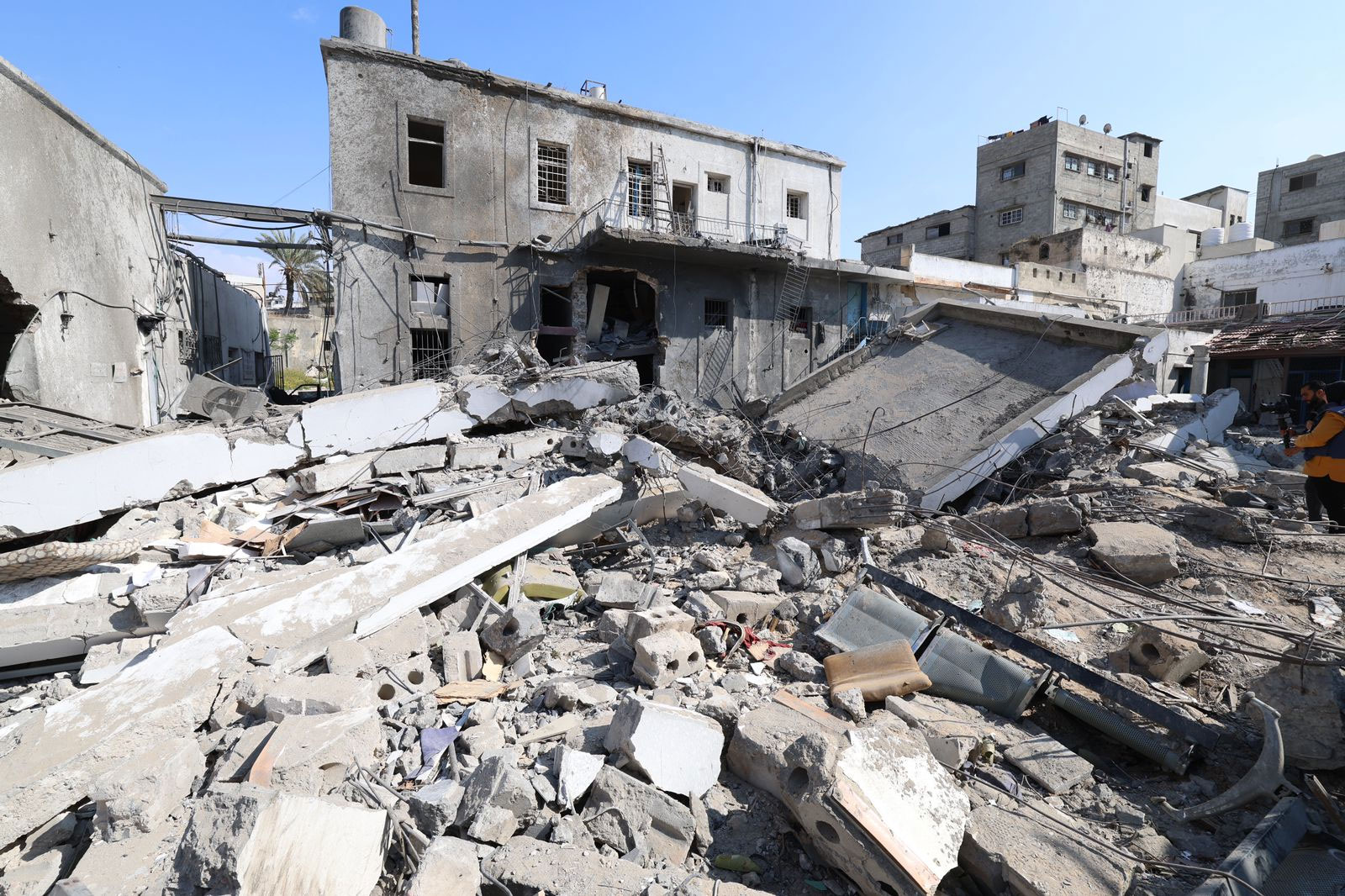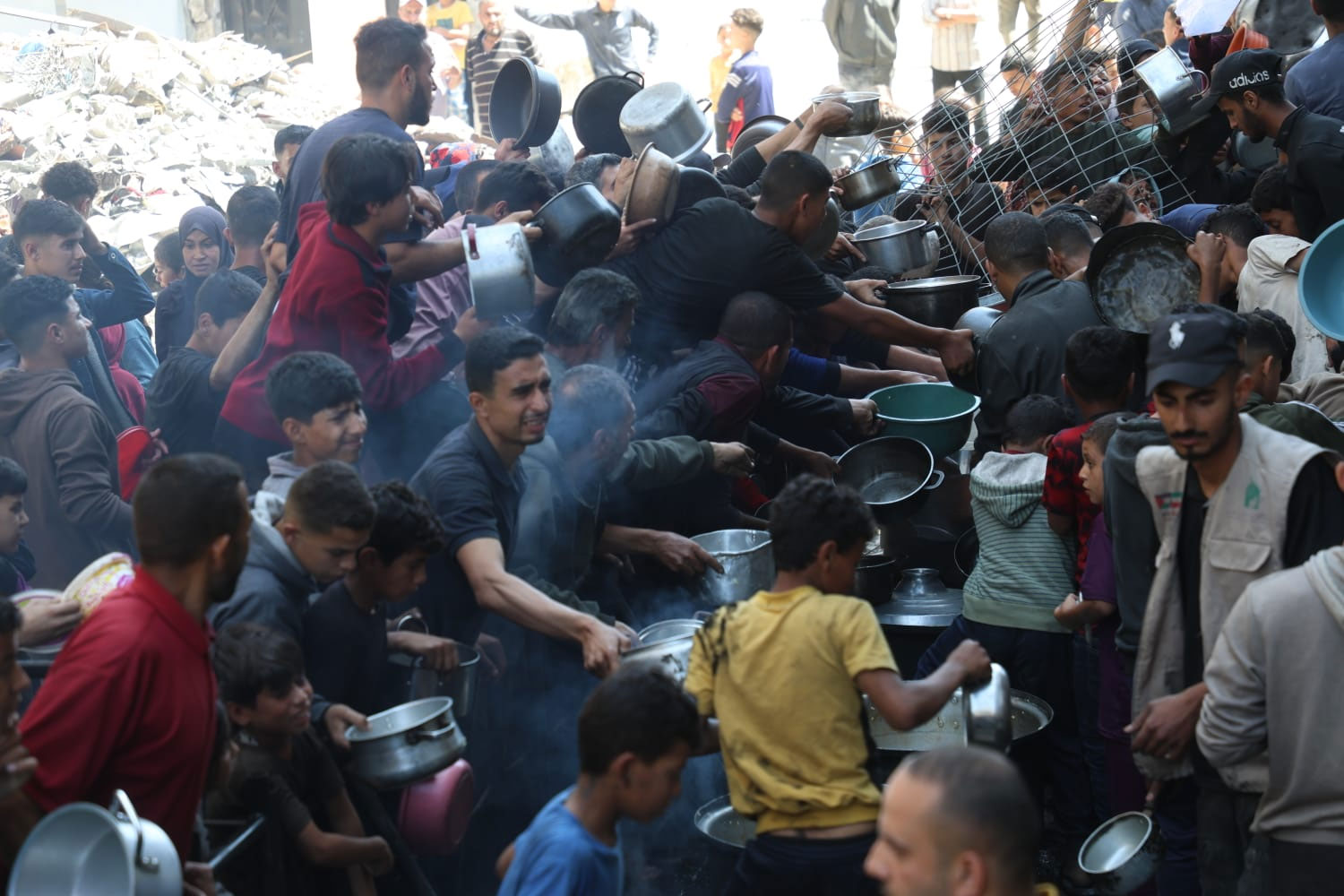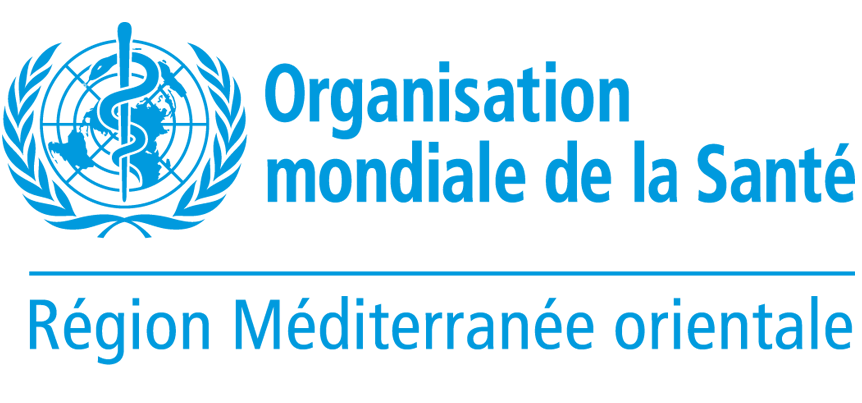Malnutrition rates reach alarming levels in Gaza, WHO warn
 Jerusalem, Cairo, Geneva, 27 July 2025 - Malnutrition is on a dangerous trajectory in the Gaza Strip, marked by a spike in deaths in July.
Jerusalem, Cairo, Geneva, 27 July 2025 - Malnutrition is on a dangerous trajectory in the Gaza Strip, marked by a spike in deaths in July.
Of 74 malnutrition-related deaths in 2025, 63 occurred in July - including 24 children under five, a child over five, and 38 adults. Most of these people were declared dead on arrival at health facilities or died shortly after, their bodies showing clear signs of severe wasting.
The crisis remains entirely preventable. Deliberate blocking and delay of large-scale food, health, and humanitarian aid has cost many lives.
Nearly one in five children under five in Gaza City is now acutely malnourished, as reported by Nutrition Cluster partners. Global Acute Malnutrition (GAM), which measures the percentage of children aged 6–59 months suffering from acute malnutrition, has tripled since June, making it the worst-hit area in the Gaza Strip. In Khan Younis and the Middle Area, rates have doubled in less than one month. These figures are likely an underestimation due to the severe access and security constraints preventing many families from reaching health facilities.
So far in July, over 5000 children under five have already been admitted for outpatient treatment of malnutrition in just the first two weeks, 18% of them with Severe Acute Malnutrition (SAM), the most life-threatening form. This continues a significant rising trend since May, with 6500 children admitted for treatment in June, which is the highest number recorded since October 2023.
An additional 73 children with SAM and medical complications were hospitalized in July, compared to 39 in June, bringing total inpatient admissions in 2025 to 263. This surge in cases is overwhelming the only four specialized malnutrition treatment centres in the Gaza Strip, pushing an already fragile health system closer to collapse. All four centres are working beyond capacity, running low on fuel, with their supplies expected to run out by mid-next month. Health workers are exhausted, and the breakdown of water and sanitation systems is accelerating the spread of disease, driving a dangerous cycle of illness and death.
The crisis is taking a severe toll on pregnant and breastfeeding women. Recent Nutrition Cluster screening data shows that over 40% are severely malnourished. The situation is most critical in the Middle Area, where rates have tripled compared to June, and in Gaza City and Khan Younis, where they have doubled.
It is not only hunger that is killing people, but also the desperate search for food. Families are being forced to risk their lives for a handful of food, often under dangerous and chaotic conditions. Since 27 May, more than 1060 people have been killed and 7200 injured while trying to access food.
WHO calls for urgent, sustained efforts to flood the Gaza Strip with diverse, nutritious food, and to expedite the delivery of therapeutic supplies for children and vulnerable groups, as well as essential medicines and supplies. This flow must remain consistent and unhindered to support recovery and prevent further deterioration. WHO reiterates its call for the protection of civilians and health. WHO also calls for the release of our detained colleague, the release of hostages, and for an immediate ceasefire.
WHO calls for urgent protection of Nasser Medical Complex and Al-Amal Hospital in the Gaza Strip
5 June 2025, Jerusalem, Cairo, Geneva – WHO warns that the Gaza Strip’s health system is collapsing, with Nasser Medical Complex, the most important referral hospital left in Gaza, and Al-Amal Hospital at risk of becoming non-functional. There are already no hospitals functioning in the north of Gaza.
Nasser and Amal are the last two functioning public hospitals in Khan Younis, where currently most of the population is living. Without them, people will lose access to critical health services.
While these hospitals have not received orders to evacuate patients or staff, they lie within or just outside the evacuation zone announced on 2 June. Israeli authorities have informed the Ministry of Health that access routes leading to both hospitals will be obstructed. As a result, safe access for new patients and staff will be difficult, if not impossible. If the situation further deteriorates, both hospitals are at high risk of becoming non-functional, due to movement restrictions, insecurity, and the inability of WHO and partners to resupply or transfer patients.
Nasser and Al Amal hospitals are operating above their capacity, while people with life-threatening injuries continue to arrive to seek urgent care amid a dire shortage of essential medicines and medical supplies. The hospitals going out of service would have dire consequences for patients in need of surgical care, intensive care, blood bank and transfusion services, cancer care, and dialysis.
Losing the two hospitals would cut 490 beds, reducing the Gaza Strip’s overall hospital bed availability to less than 1400 hospital beds (40% less hospital beds available in the Gaza Strip than before the start of the conflict), for the entire population of 2 million people.
The relentless and systematic decimation of hospitals in Gaza has been going on for too long. It must end immediately. For over 20 months, health workers, WHO, and partners have managed to keep health services partly running despite extreme conditions. But repeated attacks, escalating hostilities, denial of aid, and restricted access have systematically dismantled the health system.
WHO calls for urgent protection of Nasser Medical Complex and Al-Amal Hospital to ensure they remain accessible, functional and safe from attacks and hostilities. Patients seeking refuge and care to save their lives must not risk losing them trying to reach hospitals. Hospitals must never be militarized or targeted.
WHO calls for the delivery of essential medicines and medical supplies into Gaza to be immediately expedited safely and facilitated through all possible routes.
WHO calls for an immediate and lasting ceasefire.
Notes to editors
- Only 17 of Gaza’s 36 hospitals are currently partially functional. Of these, just five, including Nasser Medical Complex and Al-Amal Hospital, are major referral facilities, accounting for 75% of all the Gaza Strip’s hospital beds.
- Nasser Medical Complex is operating at 180% over bed capacity and Al Amal Hospital is at 100%.
- Currently, one national and four international Emergency Medical Teams are deployed at Al-Amal and Nasser hospitals as part of efforts to provide specialized care and strengthen hospital capacity.
- Acute shortages of essential medicines and medical supplies are severely disrupting health services in all hospitals, while about 50 WHO trucks of supplies await at Al-Arish and in the West Bank.
Health system at breaking point as hostilities further intensify in Gaza, WHO warns
 22 May 2025 Jerusalem, Cairo, Geneva – Israel’s intensified military operations continue to threaten an already weakened health system, amidst worsening mass population displacement and acute shortages of food, water, medical supplies, fuel and shelter.
22 May 2025 Jerusalem, Cairo, Geneva – Israel’s intensified military operations continue to threaten an already weakened health system, amidst worsening mass population displacement and acute shortages of food, water, medical supplies, fuel and shelter.
Four major hospitals in Gaza (Kamal Adwan Hospital, Indonesia Hospital, Hamad Hospital for Rehabilitation and Prosthetics, and European Gaza Hospital) have had to suspend medical services in the past week due to their proximity to hostilities or evacuation zones, and attacks. WHO has recorded 28 attacks on health care in Gaza during this period and 697 attacks since October 2023.
Only 19 of Gaza Strip’s 36 hospitals remain operational, including one hospital providing basic care for the remaining patients still inside the hospital, and are struggling under severe supply shortages, lack of health workers, persistent insecurity, and a surge of casualties, all while staff work in impossible conditions. Of the 19 hospitals, 12 provide a variety of health services, while the rest are only able to provide basic emergency care. At least 94% of all hospitals in the Gaza Strip are damaged or destroyed.
The increased hostilities and new evacuation orders issued across northern and southern Gaza in the past two days threaten to push even more health facilities out of service. This includes 1 hospital, 11 primary care centres, and 13 medical points within the evacuation zones, and an additional 5 hospitals, 1 field hospital, 9 primary care centres, and 23 medical points within 1000 metres of those zones.
North Gaza has been stripped of nearly all health care. Al-Awda Hospital is only minimally functional, serving as a trauma stabilization point. It faces an imminent risk of closure due to ongoing insecurity and restricted access. The hospital’s third floor was reportedly attacked on Wednesday, injuring a staff member. Hostilities in the area also damaged the water tank and pipeline. Today, the hospital was attacked again. The third and fourth floors were reportedly hit, injuring two health workers. Patient triage tents, including one provided by WHO, caught fire, which also burned all medical supplies in the warehouse and destroyed vehicles in the basement. A WHO mission attempting to reach the hospital today was impeded.
The Indonesian Hospital is out of service due to continued military presence since 18 May, making it inaccessible. Yesterday, a WHO mission to the hospital was forced to abort due to the security situation after waiting nearly four hours for clearance to proceed. WHO team had planned to deliver food and water to patients, assess their conditions, and identify critical equipment for transfer. WHO tried to reach the hospital again today, but the mission was impeded.
Kamal Adwan Hospital, which had the only centre to treat patients with severe acute malnutrition in North Gaza, went out of service on 20 May after intense hostilities in its vicinity, forcing patients to evacuate or be discharged prematurely.
In southern Gaza, Nasser Medical Complex, Al-Amal, and Al-Aqsa hospitals are overwhelmed by a surge of injured people, worsened by a new wave of displacement to Deir al Balah and Khan Younis. The European Gaza Hospital remains out of service following an attack on 13 May, cutting off vital services including neurosurgery, cardiac care, and cancer treatment – all unavailable elsewhere in Gaza.
Currently, across the Gaza Strip, only 2000 hospital beds remain available, for a population of over 2 million people, grossly insufficient to meet the current needs. Of these, at least 40 beds are at risk of being lost as they are in hospitals within newly declared evacuation zones, while an additional 850 could be lost if conditions deteriorate at facilities near these zones.
Continued hostilities and military presence inhibit patients from accessing care, obstruct staff from providing care, and prevent WHO and partners from resupplying hospitals.
With each hospital forced out of service, patients lose access to health care, and WHO and partners’ efforts, to sustain Gaza’s health system are undone. The destruction is systematic. Hospitals are rehabilitated and resupplied, only to be exposed to hostilities or attacked again. This destructive cycle must end.
Amid constant fear and insecurity, health workers, including those from national and international emergency medical teams, continue delivering urgent care in Gaza. WHO salutes their courage and commitment.
WHO calls for the active protection of health care. Hospitals must never be militarized or targeted.
WHO calls for aid at scale to be allowed into Gaza through all possible routes, and for unimpeded humanitarian access to reach people wherever they are. Echoing the United Nations’ Relief Chief, WHO reiterates that the UN and its partners have a clear, principled and effective plan to deliver aid with safeguards against diversion, a system that has worked and must be enabled to continue.
WHO calls for an immediate and lasting ceasefire.
People in Gaza starving, sick and dying as aid blockade continues
 12 May 2025, Cairo/Geneva/Jerusalem – The risk of famine in Gaza is increasing with the deliberate withholding of humanitarian aid, including food, in the ongoing blockade.
12 May 2025, Cairo/Geneva/Jerusalem – The risk of famine in Gaza is increasing with the deliberate withholding of humanitarian aid, including food, in the ongoing blockade.
The entire 2.1 million population of Gaza is facing prolonged food shortages, with nearly half a million people in a catastrophic situation of hunger, acute malnutrition, starvation, illness and death. This is one of the world’s worst hunger crises, unfolding in real time.
The latest food security analysis was released today by the Integrated Food Security Phase Classification (IPC) partnership, of which WHO is a member.
“We do not need to wait for a declaration of famine in Gaza to know that people are already starving, sick and dying, while food and medicines are minutes away across the border,” said WHO Director-General Dr Tedros Adhanom Ghebreyesus. “Today’s report shows that without immediate access to food and essential supplies, the situation will continue to deteriorate, causing more deaths and descent into famine.”
Famine has not yet been declared, but people are starving now. Three quarters of Gaza’s population are at “Emergency” or “Catastrophic” food deprivation, the worst two levels of IPC's five level scale of food insecurity and nutritional deprivation.
Since the aid blockade began on 2 March 2025, 57 children have reportedly died from the effects of malnutrition, according to the Ministry of Health. This number is likely an underestimate and is likely to increase. If the situation persists, nearly 71 000 children under the age of five are expected to be acutely malnourished over the next eleven months, according to the IPC report.
People in Gaza are trapped in a dangerous cycle where malnutrition and disease fuel each other, turning everyday illness into a potential death sentence, particularly for children. Malnutrition weakens the bodies, making it harder to heal from injuries and fight off common communicable diseases like diarrhoea, pneumonia, and measles. In turn, these infections increase the body’s requirement for nutrition, while reducing nutrient intake and absorption, resulting in worsening malnutrition. With health care out of reach, vaccine coverage plummeting, access to clean water and sanitation severely limited, and increased child protection concerns, the risk of severe illness and death grows, especially for children suffering from severe acute malnutrition, who urgently need treatment to survive.
Pregnant and breastfeeding mothers are also at high risk of malnutrition, with nearly 17 000 expected to require treatment for acute malnutrition over the next eleven months, if the dire situation does not change. Malnourished mothers struggle to produce enough nutritious milk, putting their babies at risk, while the delivery of counselling services for mothers is heavily compromised. For infants under six months, breastmilk is their best protection against hunger and disease – especially where clean water is scarce, as it is in Gaza.
The long-term impact and damage from malnutrition can last a lifetime in the form of stunted growth, impaired cognitive development, and poor health. Without enough nutritious food, clean water, and access to health care, an entire generation will be permanently affected.
The plan recently announced by Israeli authorities to deliver food and other essential items across Gaza via proposed distribution sites is grossly inadequate to meet the immediate needs of over two million people. WHO echoes the UN’s call for the global humanitarian principles of humanity, impartiality, independence and neutrality to be upheld and respected and for unimpeded humanitarian access to be granted to provide aid based on people’s needs, wherever they may be. A well-established and proven humanitarian coordination system, led by the UN and its partners, is already in place and must be allowed to function fully to ensure that aid is delivered in a principled, timely, and equitable manner.
The aid blockade and shrinking humanitarian access continue to undermine WHO’s ability to support 16 outpatient and three inpatient malnutrition treatment centres with life-saving supplies, and to sustain the broader health system. The remaining supplies in WHO’s stocks inside Gaza are only enough to treat 500 children with acute malnutrition – a fraction of the urgent need – while essential medicines and supplies to treat diseases and trauma injuries are already running out and cannot be replenished due to the blockade.
People are dying while WHO and partners’ life-saving medical supplies sit just outside Gaza – ready for deployment, with safeguards in place to ensure the aid reaches those who need it most in line with humanitarian principles. WHO calls for the protection of health care and for an immediate end to the aid blockade, which is starving people, obstructing their right to health, and robbing them of dignity and hope. WHO calls for the release of all hostages, and for a ceasefire, which leads to lasting peace.








